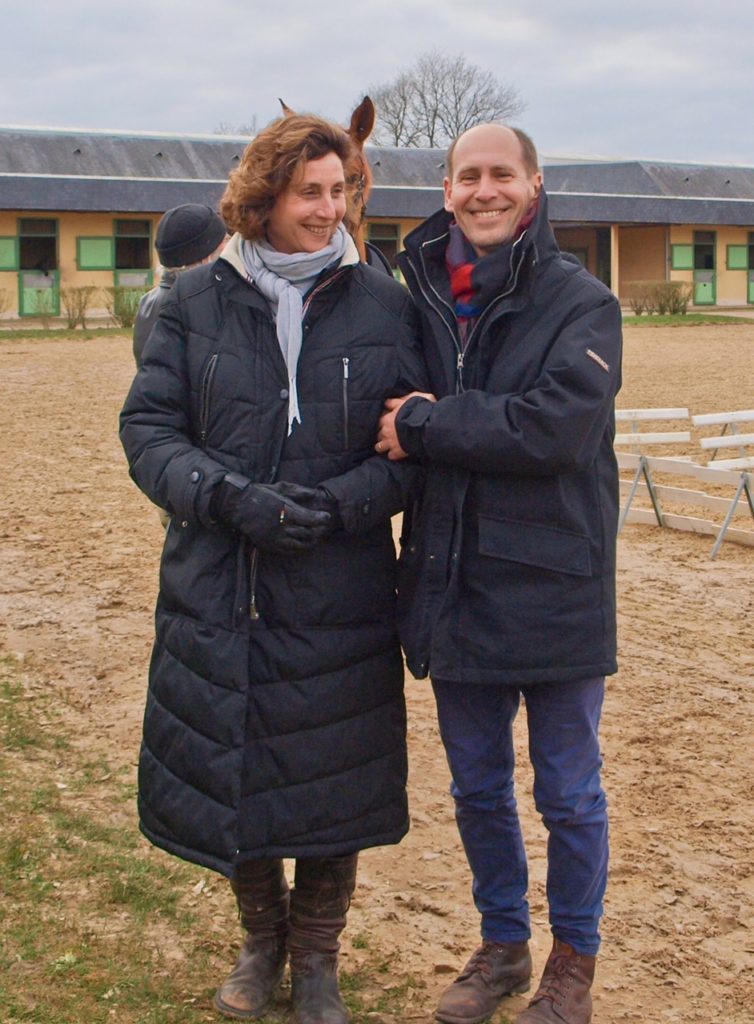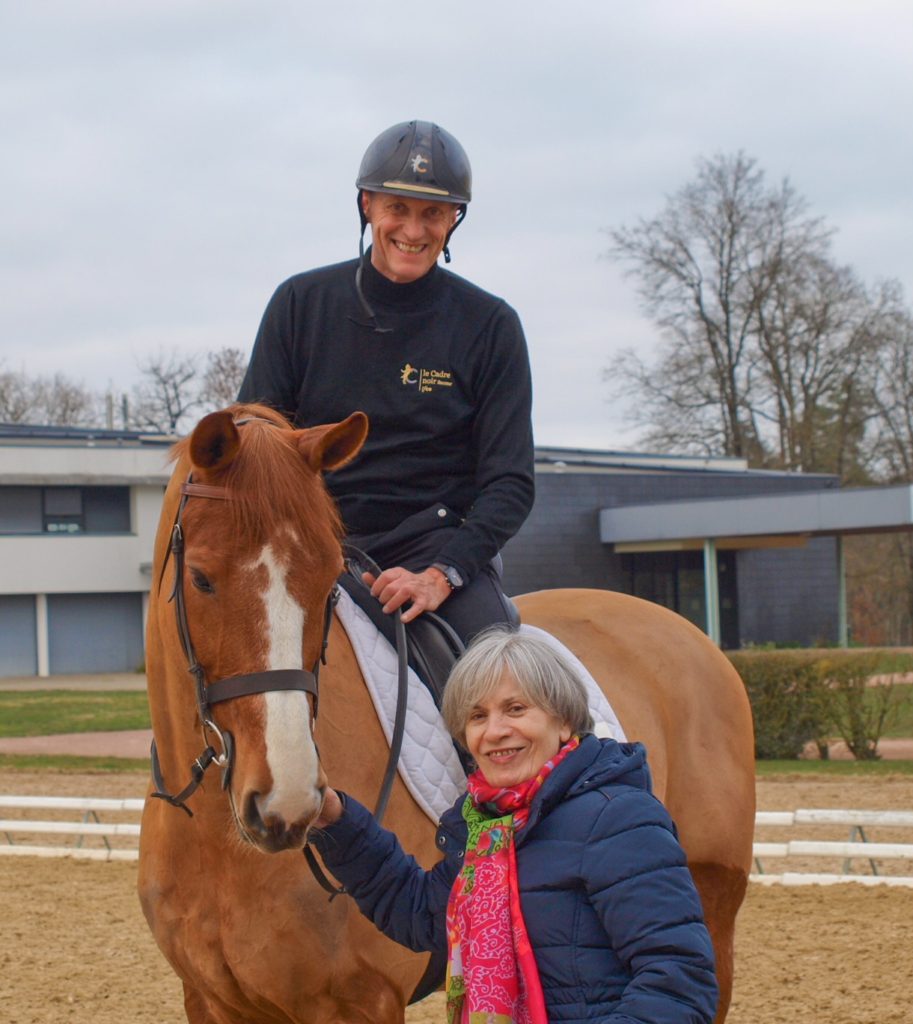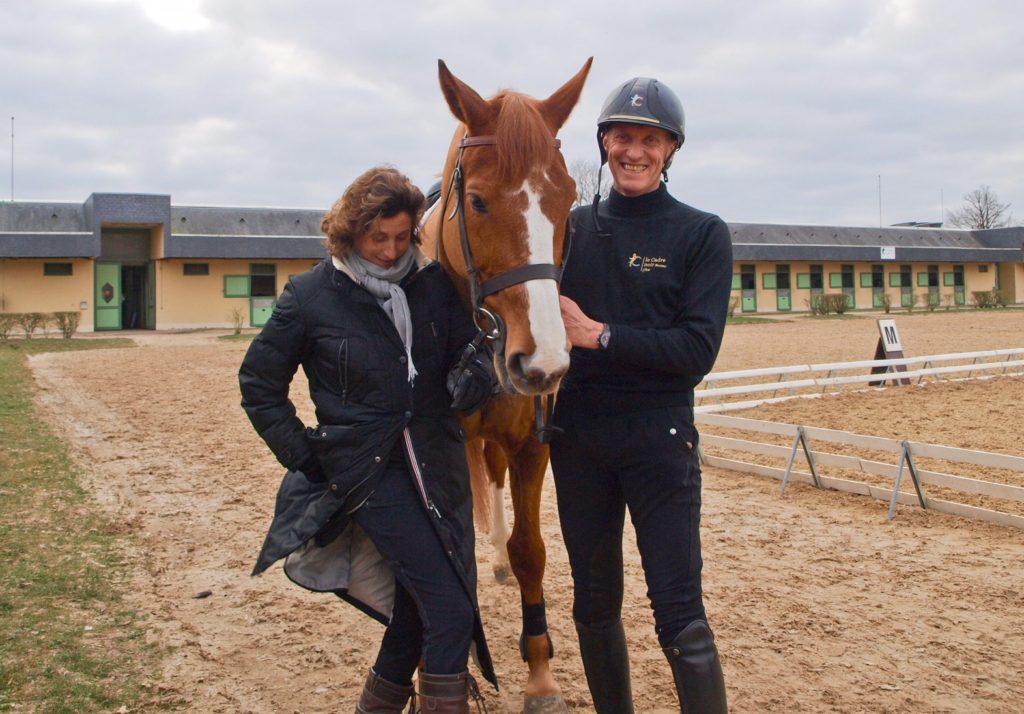Bettina traveled to France in late February, where she first worked with Bernard Sachsé in preparation for his participation in the upcoming April Interactive Arts Workshop hosted by the Association for the Promotion of the Art of Horsemanship in America. After tme spent with Bernard, Bettina visited at France’s Cadre Noir for friendly consultations. Below are notes from her trip:
“After practicing blending my teachings with those of Bernard Sachsé, I left Paris in the direction of Saumur. As per usual, my great friend Jeanne Boisseau picked me up from the train station in her red car. Just like first time I went there with Mr Oliveira when I was seventeen! He nicknamed her the pilot fish and I in the back was the remora …
Here we are, almost forty years later, and still remembering every bit of watching him teach there.
Upon arrival we were greeted by the Polish artist Piotr Wojcik, who came along as our photographer. His artist’s eye provided us with a great perspective. I was invited to make myself available for any of the Écuyers wanting an outside eye that specializes in the mysteries of piaffer, passage and pirouettes. So it was in that spirit of friendly consultation that the two and a half days progressed.
Here are the things that most impressed me:
Not only were the riders very linked to their horses balance issues but also their psychological well-being and how it permeates through their work , but also their own psyches when faced with so many duties .
One often imagines that the life in the academic setting is just one learning curve after another and one assumes that all the focus is solely on gleaning every spec of perfection from every ride; far from that these riders have to cope with providing their gala mounts with the calm and routine for that type of group stress , as well as the creative cohesiveness to function as a group. They must teach within the specs of the theory and method they represent irregardless of their own leanings as private riders; some must show, some choose to show; the ones with special affinity get paired up with high school equirements; all must maintain that rigorous sparse look under military uniforms (bravo the écuyères who do that and have born children!) And they must participate in carrying out their UNESCO mission to educate others abroad about their art and its tradition.
That is an awful lot to juggle. So, when they take the time to present their riding concerns to me, I am always inspired to dig deep into my experience to offer solutions and guidance.
It’s were all theories join really, in that moment when the collective experience gets pooled and riders all turn in the same direction: to get the horse over his difficulties in a civilized and concerned fashion.
There are no shortcuts to the many stresses of high school demands whether you show or not, whether you have a small or monster talent or whether your horse can go all the way to Grand Prix naturally or part of the way and the rest boosted by the education of the rider.
Then there is the ethics clause that requires thought and is the gift older riders past their physical prime but wise in this thought process can pass on to the younger athletes so able and so concerned on how far to go with their skills.
It’s a very sobering thought to have incandescent ability and powerful trained reflexes and it opens the conscious thought as to how far is it legal to bring a horse up by one’s will and skill. The adage if don’t go beyond the horse’s capacities really has to do with that because a good and trained educated rider can get almost any horse to do almost anything but is it wise? Is it appropriate? Is it kind?
It’s the type of self editing and self knowledge that horses have always pushed us to acquire and, frankly, in this day and age of instant and frantic communication, it is a needed counter balance. What used to be common ethics and simply thoughtful consideration and elegant manners is no longer very evident in this day and age of enhanced sport goals.
It was my privilege to stand for this ethic on the grounds of a school that has kept faith with it, at times uneasily, but with the determination that has not yet faltered.
To be sufficient in this is to be able when you get off your horse and look to his eye that is calm and full of understanding in this human goal of high level dressage and to know that while satisfying its parameters, you have not failed in the attempt to stay with what is endemic to his nature. Those boundaries are the fruit of experience and it is why there always has to be a dialogue between older and younger riders. When it can be in the good humor, intellectual awareness and physical readiness that was evinced in this recent visit with the Cadre Noir, then the horse is well served.”
(Photos below courtesy of Piotr Wojcik)
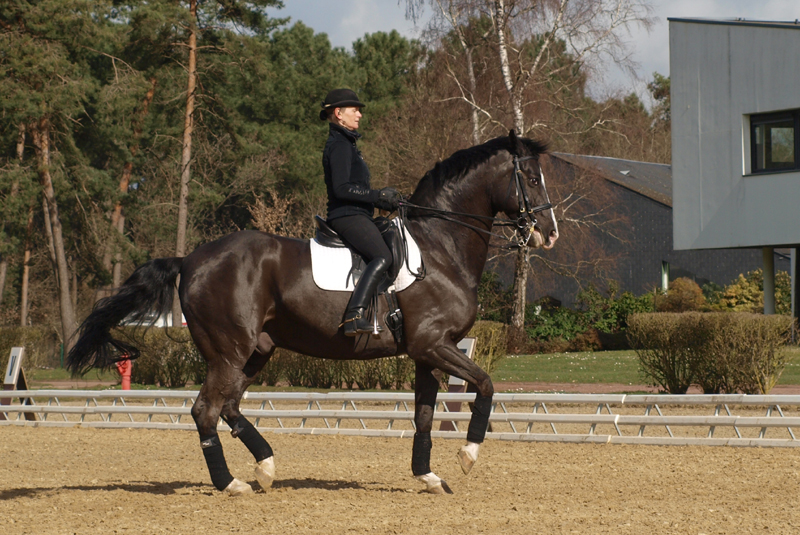
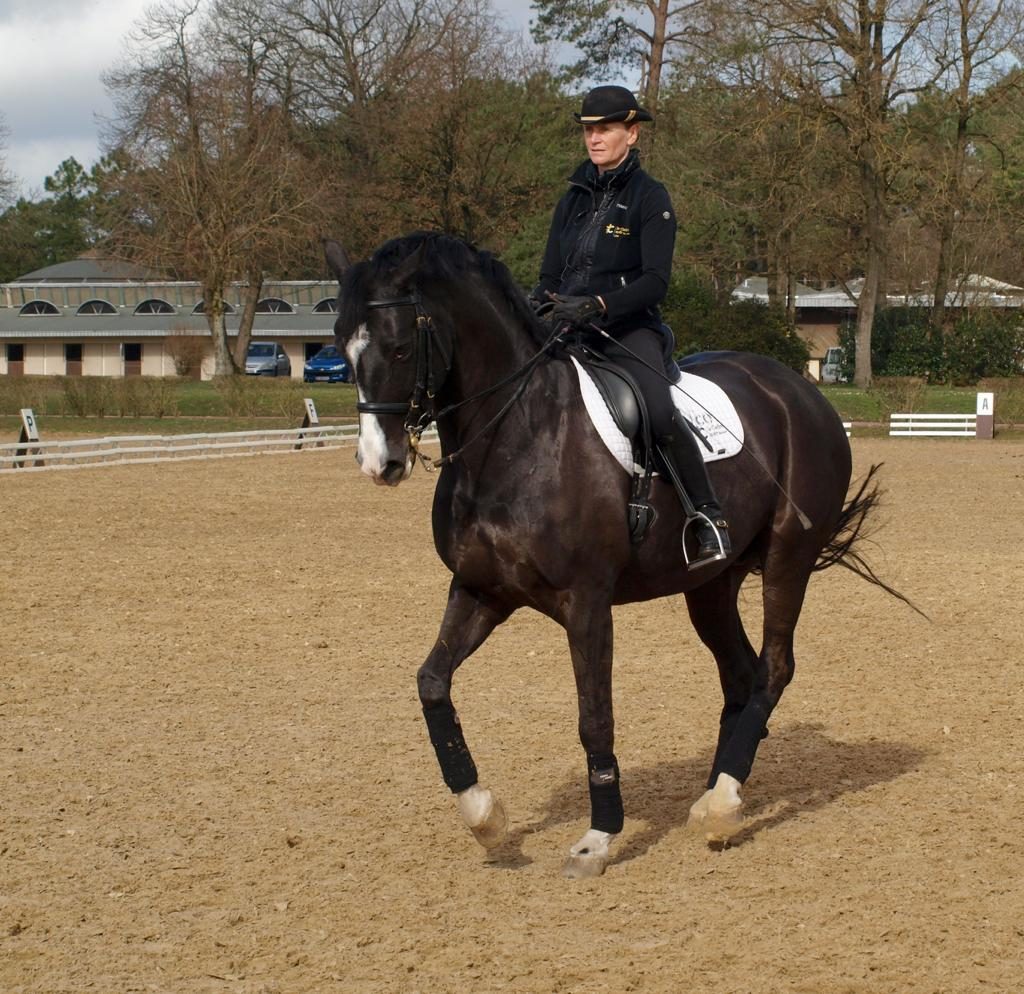
Rider Nadege Bourdon
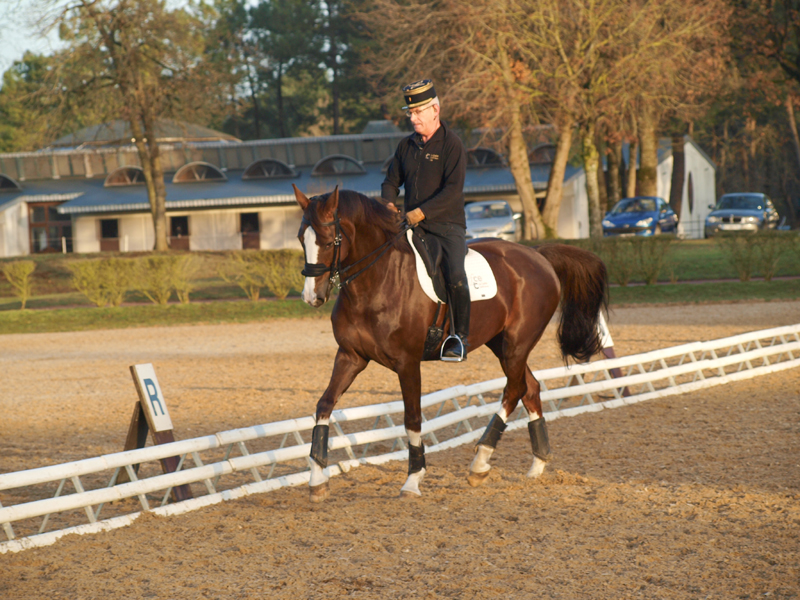
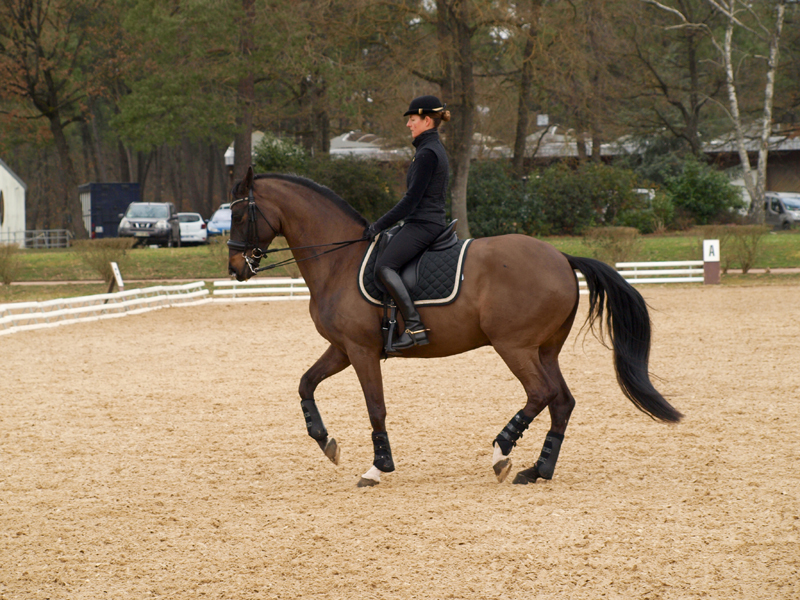
Pauline van der Landeghem
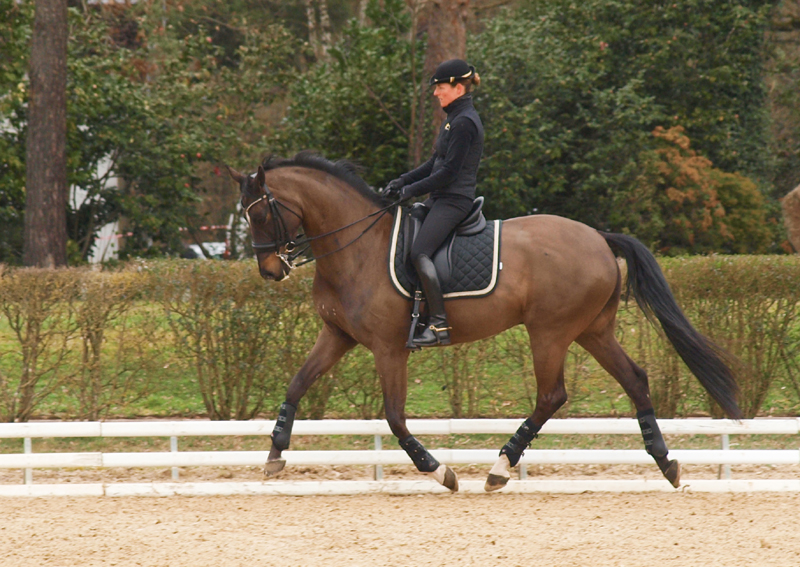
Pauline van der Landeghem
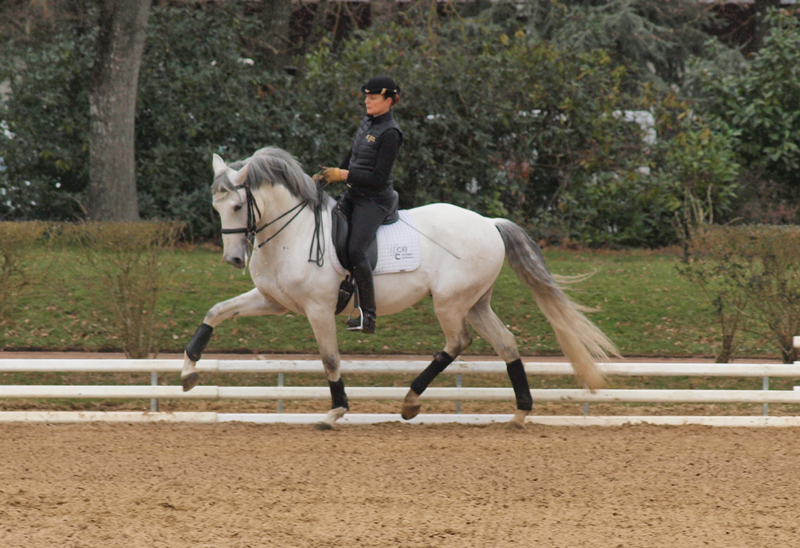
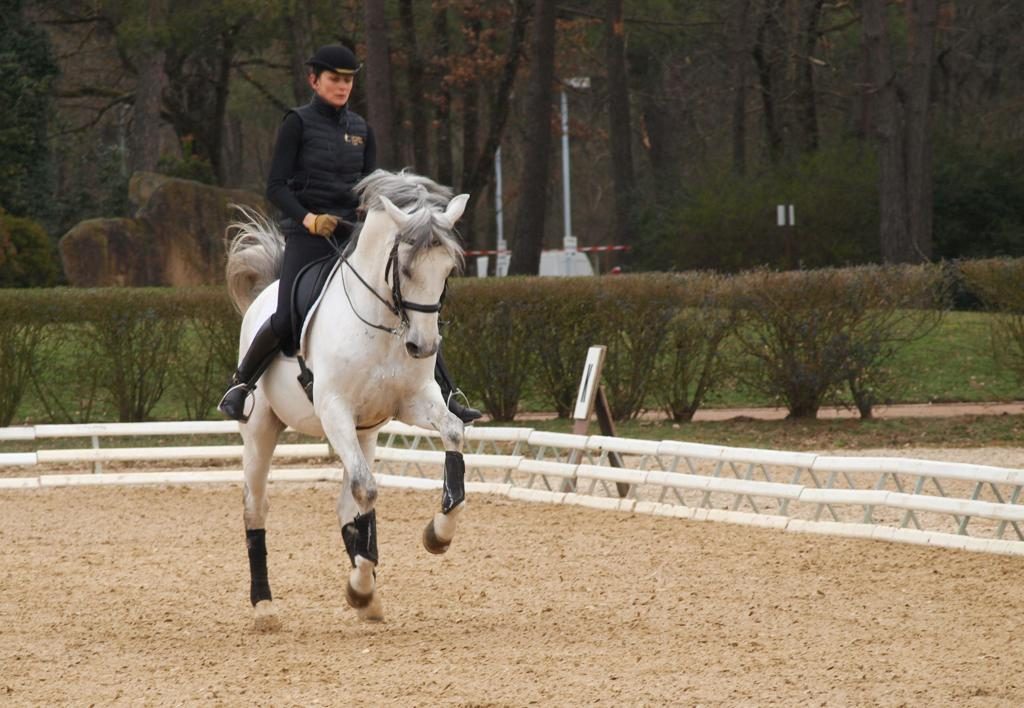
Rider Laurence Sautet
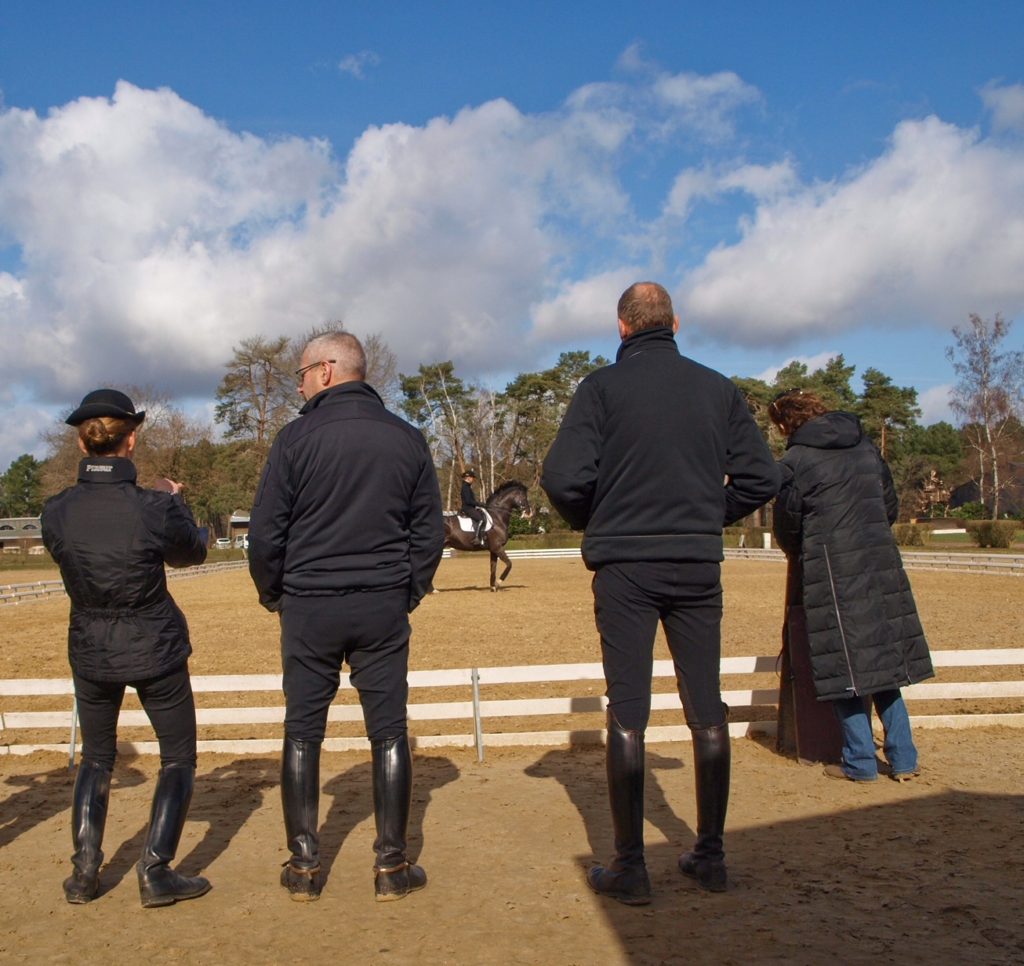
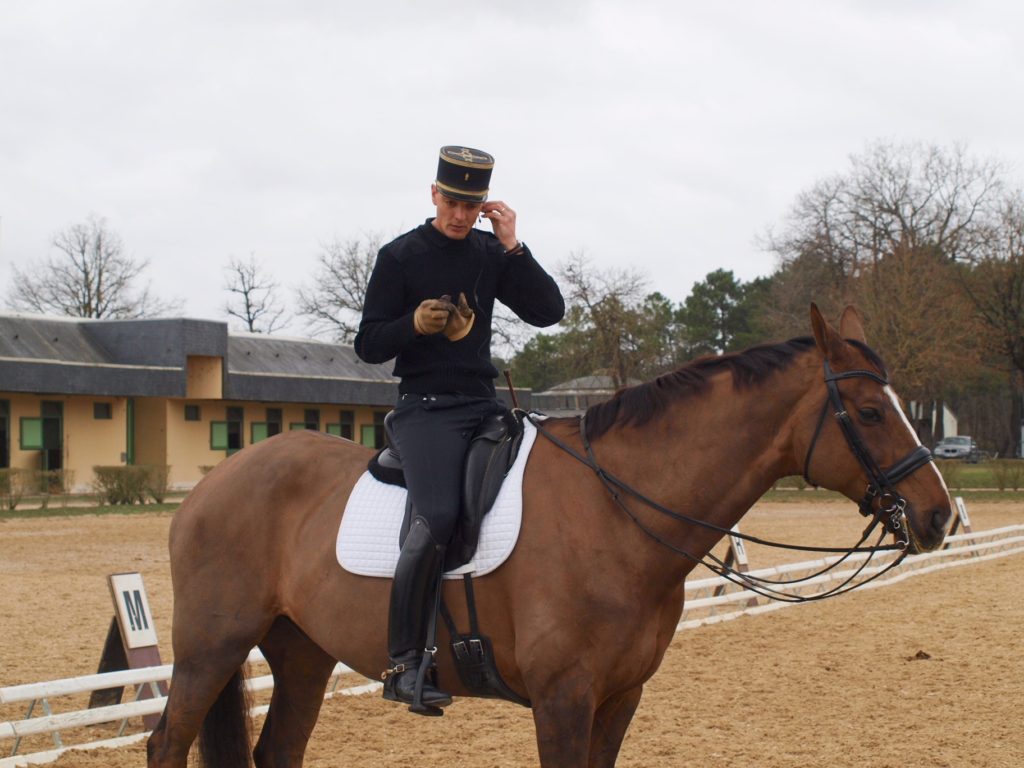
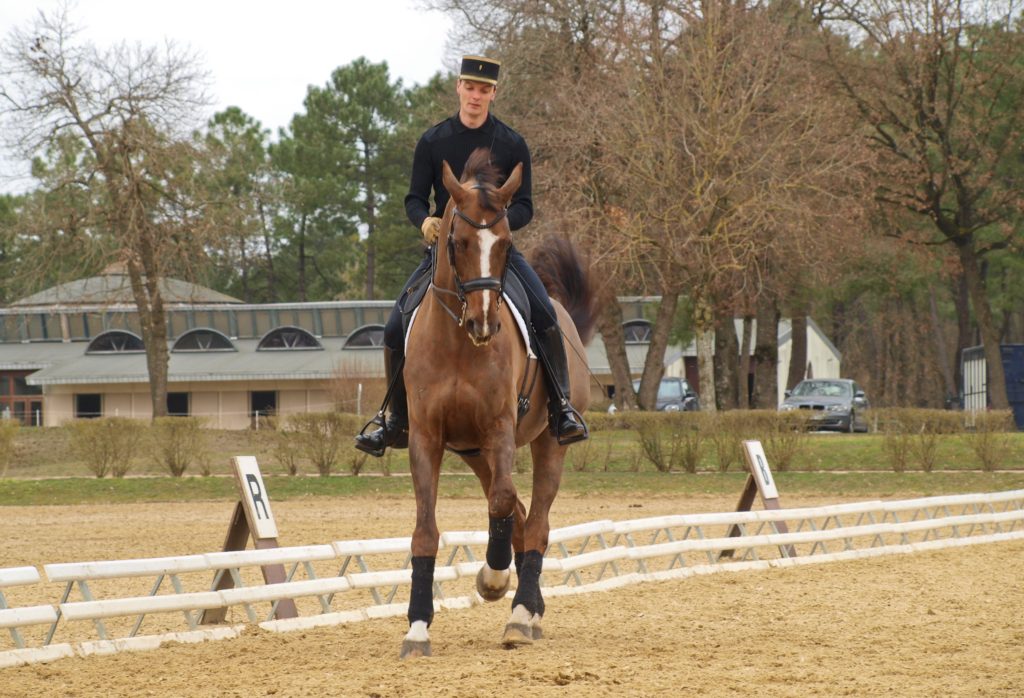
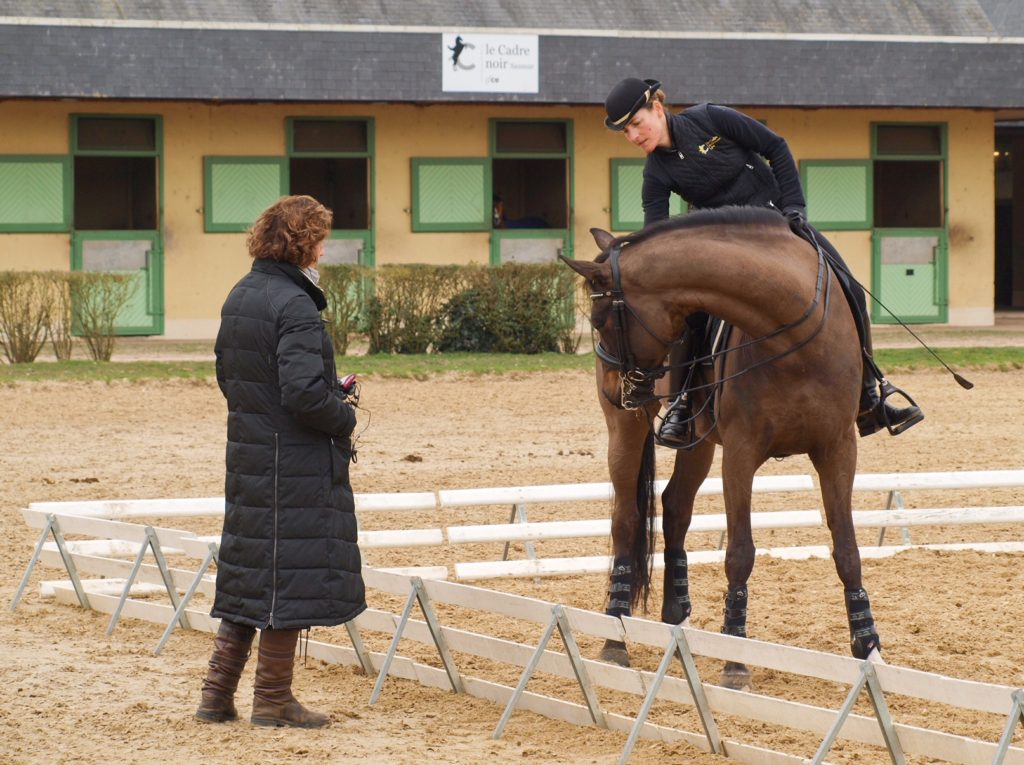
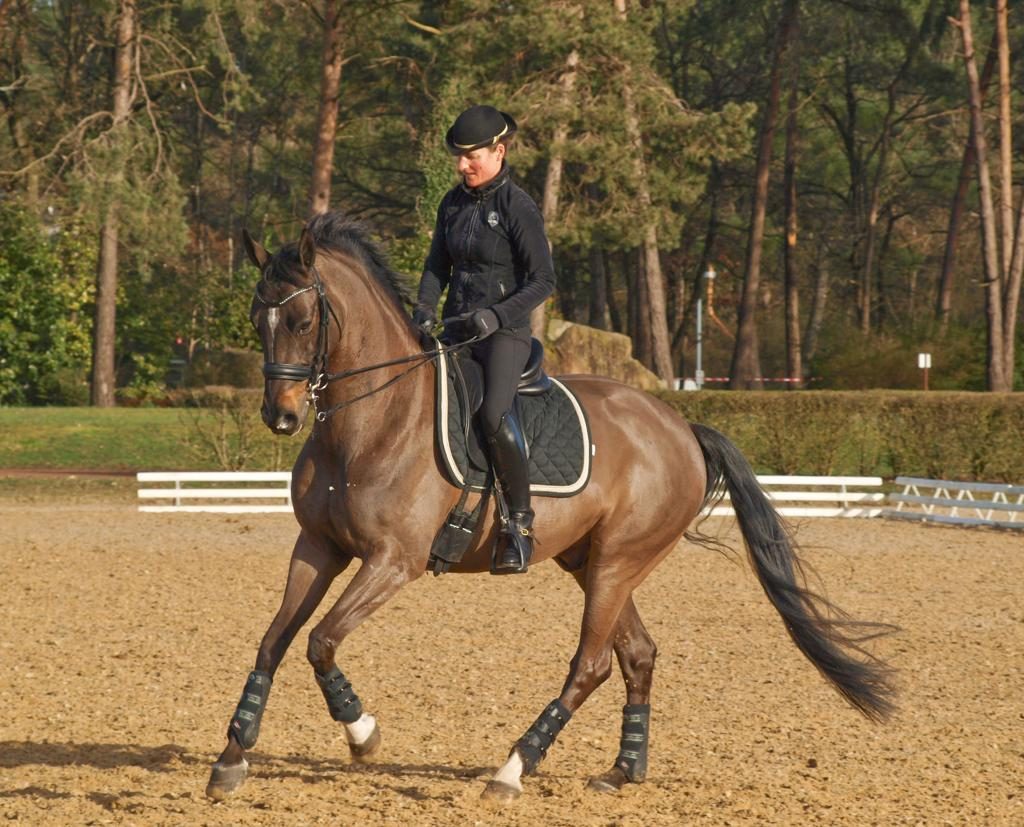
Pauline van der Landeghem
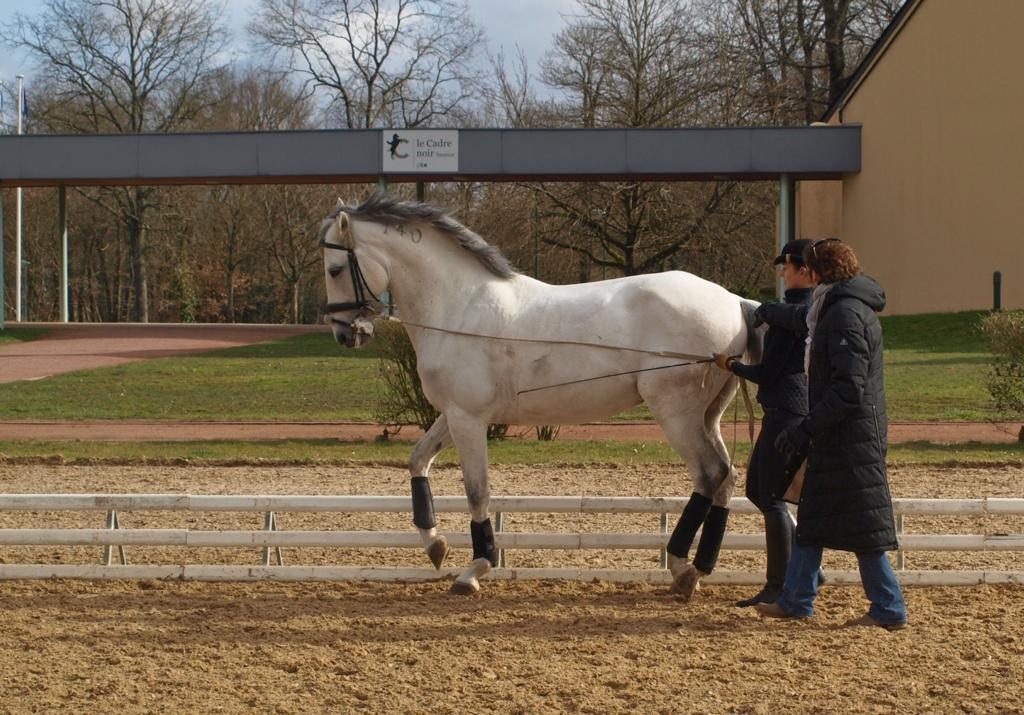
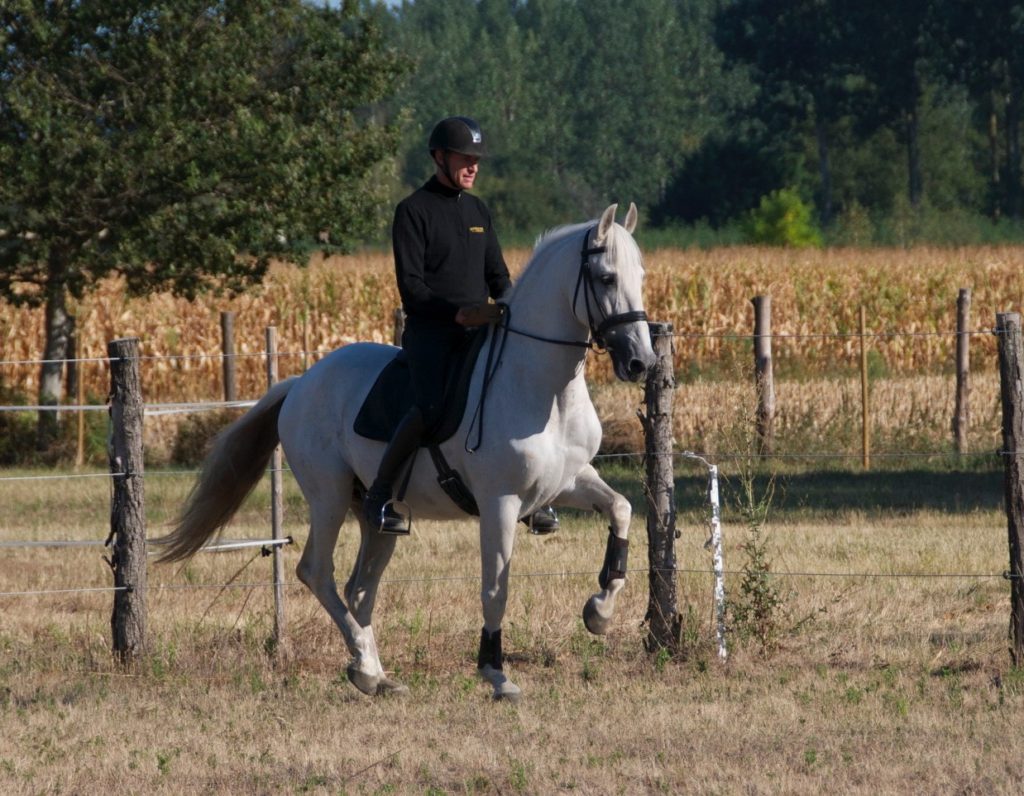
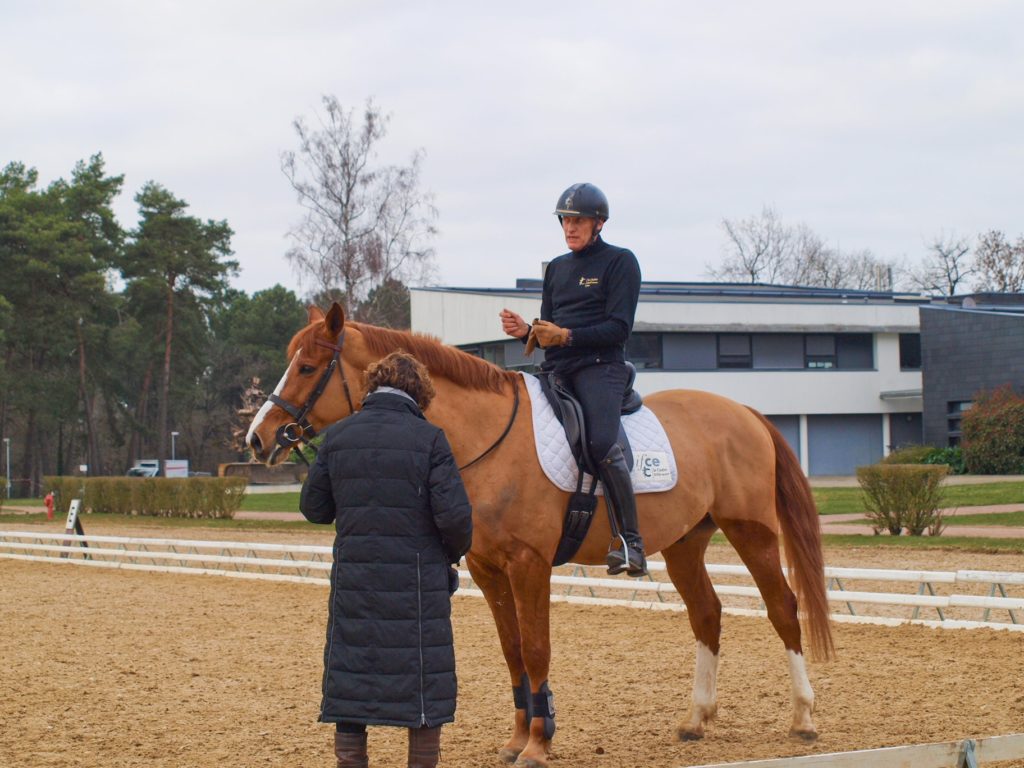
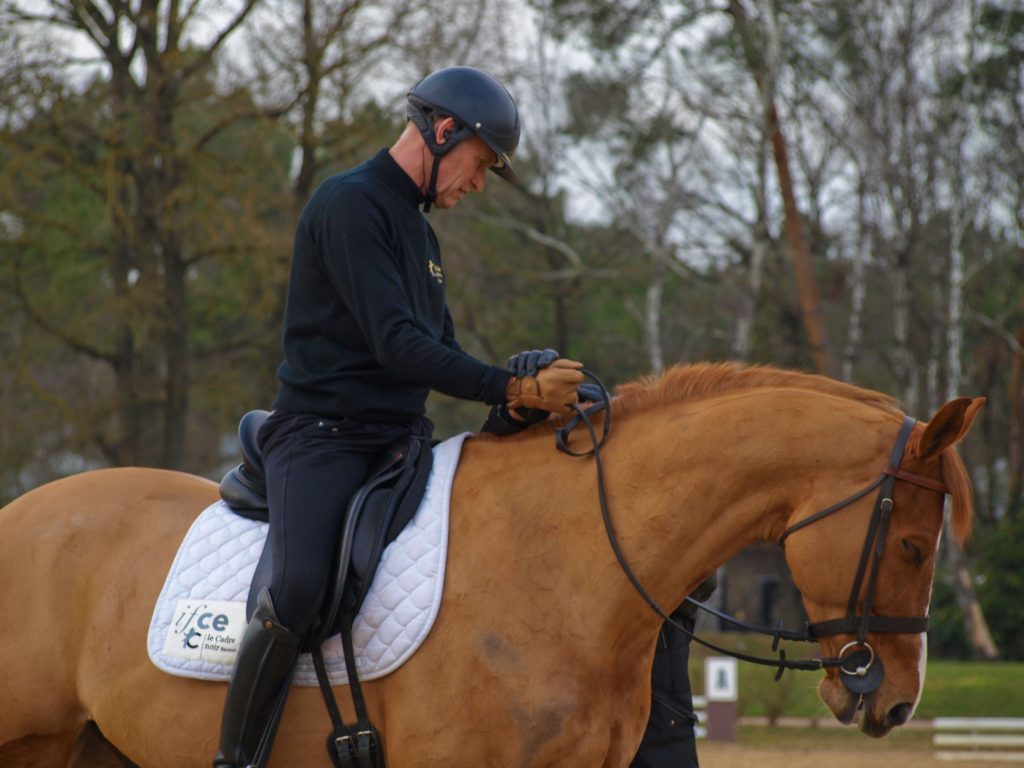
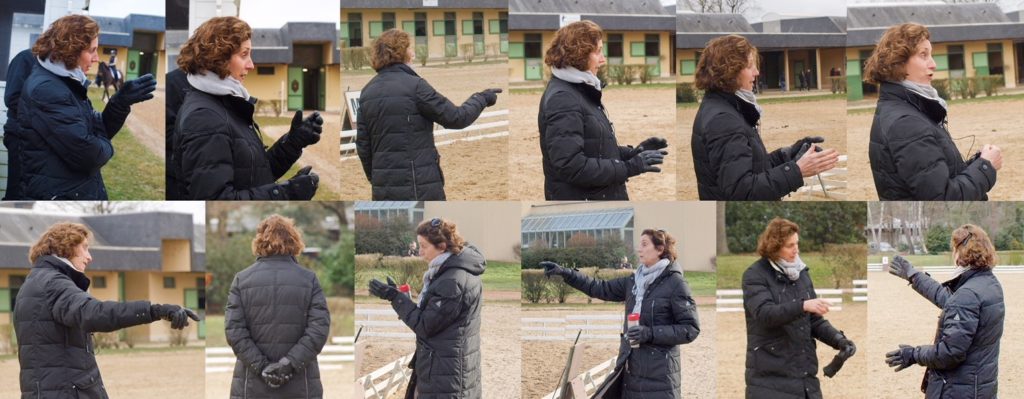
“I give a big congratulations to Cheyenne Minassian! This young rider, pictured below and sponsored by Judge Bernard Maurel, managed to upgrade her riding in under a year to developing her loaned ride from M. Maurel into a well-developed and flowing St Georges ride!
Of course, having expert guidance is a huge help and a quality ride but this young lady has developed in careful and studious steps since she first ride for me three years ago. Therefore it is my great pleasure to invite her to visit with me at home this fall and let her feel a bit of training involving piaffer, passage, and pirouettes!
Every so often I see during my teachings a young rider that dedicated herself to learning what the horse sees in this whole process and that makes all the travel and jet lag worthwhile.”
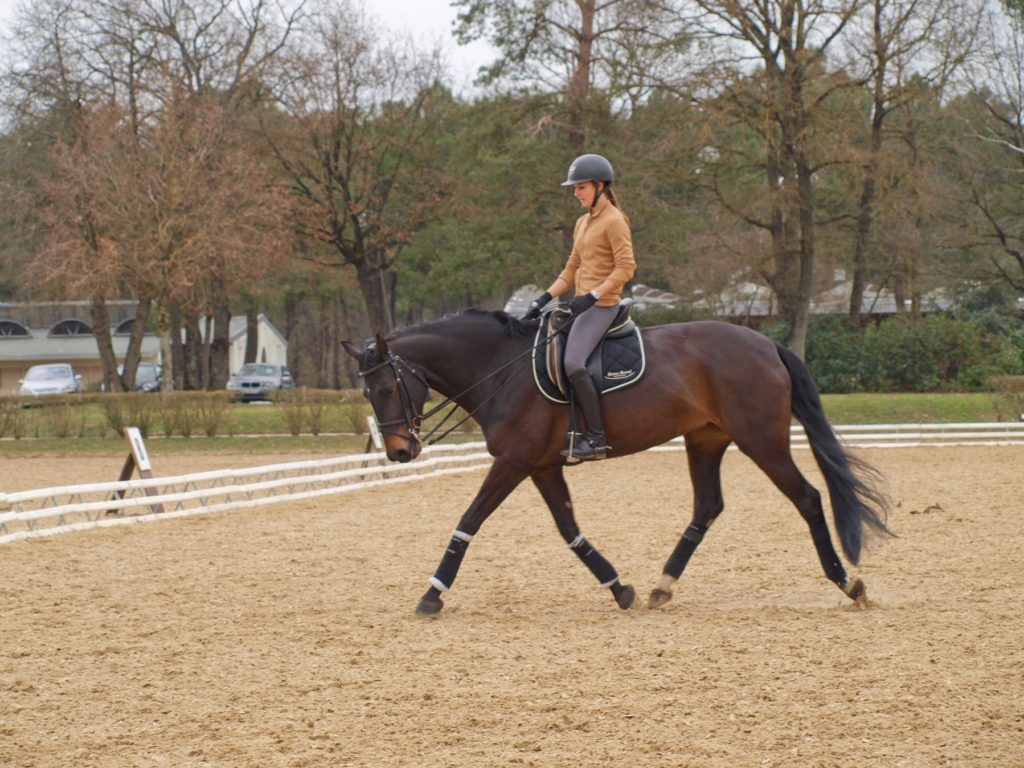
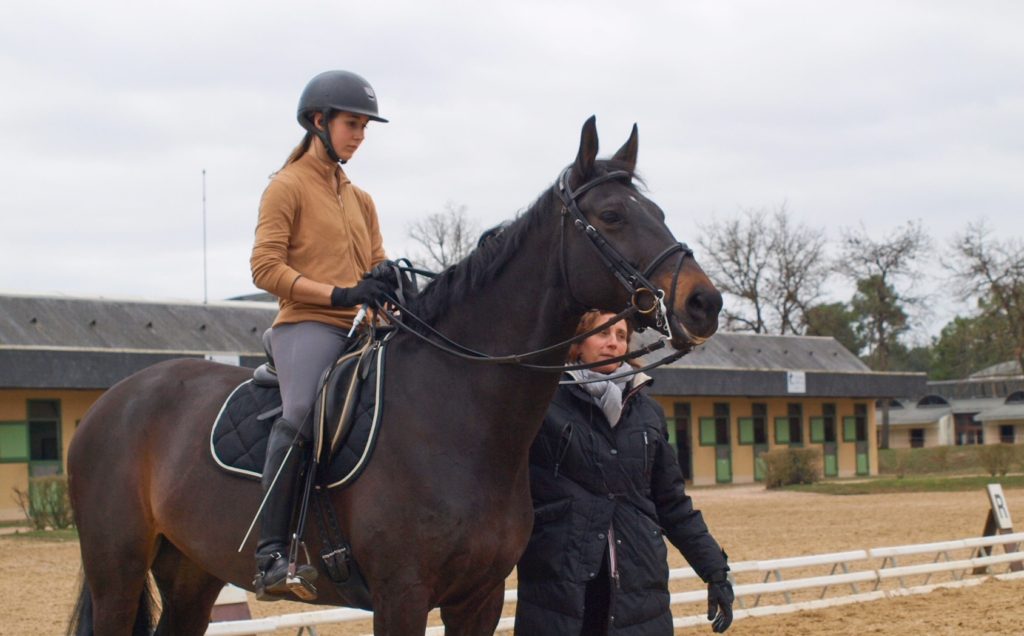
The visit to Saumur, home of the Cadre Noir, was also a chance to visit with good friends that, in addition to Olivier Puls included Jeanne Boisseau and Piotr Wojcik.
